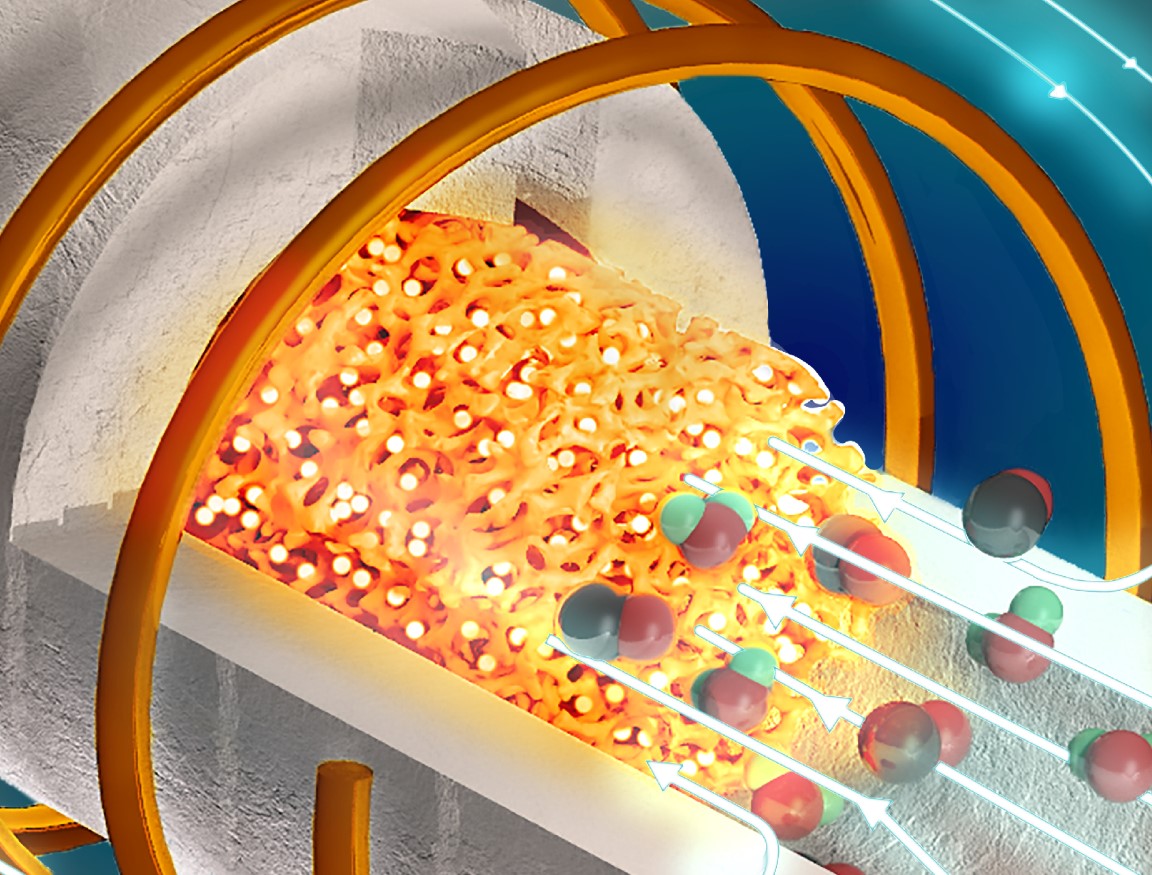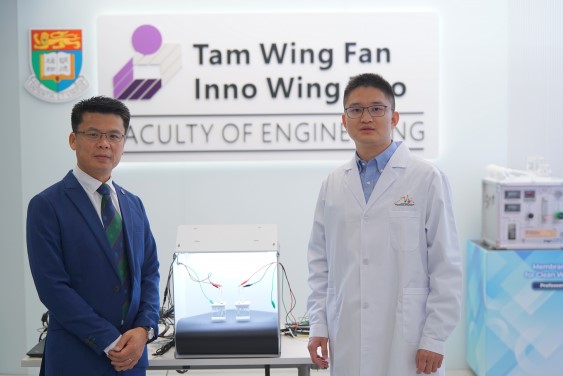A New Dawn in Green Industry: Stanford's Electric Reactor Innovation
As the world grapples with the urgent need to reduce carbon emissions, a groundbreaking innovation from Stanford University might hold the key to greening some of the most carbon-intensive industries. Enter the electric reactor—a cutting-edge technology that has the potential to significantly cut industrial emissions by substituting fossil fuel-based heat sources with electricity.

Figure 1. Metamaterial Reactor. (Credit: Dolly Mantle)
Figure 1 shows the inductively heated metamaterial reactor with catalysts filling the ceramic foam baffle. It is producing carbon monoxide and water from the reverse water gas shift reaction.
The Challenge: Industrial Carbon Emissions
Industries like cement, steel, and chemicals are among the largest contributors to global carbon emissions. These sectors rely heavily on high-temperature processes, typically powered by fossil fuels, to produce the materials that underpin our modern economy. While renewable energy has made strides in sectors like electricity generation, decarbonizing industrial heat has proven to be a tougher nut to crack. The main challenge lies in finding an alternative to the vast amounts of heat required for these processes, which have traditionally been generated through the combustion of coal, oil, or natural gas [1].
The Electric Reactor: A Game Changer
Stanford’s electric reactor leverages magnetic induction, a method already used in some high-tech manufacturing processes, to create the intense heat necessary for industrial reactions. By using electricity instead of fossil fuels, the reactor drastically reduces the carbon footprint of industrial processes [2]. What’s more, this technology doesn’t just match the performance of traditional methods—it exceeds it. The reactor can achieve temperatures higher than those generated by burning fossil fuels, and it does so with greater energy efficiency.
Broader Implications: Beyond Emissions Reductions
The implications of this breakthrough extend beyond just reducing emissions. The electric reactor could revolutionize the design of industrial plants, allowing for smaller, more efficient setups that are less reliant on sprawling infrastructure. Additionally, as the cost of renewable electricity continues to fall, the economic case for adopting this technology becomes even stronger.
Future Prospects: Scaling and Adoption
While still in its early stages, the electric reactor represents a promising step towards the broader goal of industrial decarbonization. As the world increasingly shifts towards electrification in other sectors, such as transportation and heating, the industrial sector’s transition to electric heat could be the next frontier in the fight against climate change.
Stanford's innovation is a beacon of hope, suggesting that with the right technology, even the most stubborn sectors can be transformed. The challenge now lies in scaling up this technology and integrating it into the industrial landscape on a global scale.
The development of Stanford's electric reactor underscores the potential for technological innovation to address some of the most pressing environmental challenges of our time. As industries begin to adopt this new technology, we may be witnessing the dawn of a greener, more sustainable industrial age.
Source: Stanford University
References:
- https://techxplore.com/news/2024-08-electric-reactor-industrial-emissions.html
- https://www.eurekalert.org/news-releases/1055023
Cite this article:
Hana M (2024), A New Dawn in Green Industry: Stanford's Electric Reactor Innovation, AnaTechMaz, pp. 60















